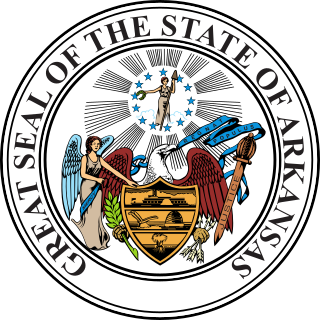Gender dysphoria (GD) is the distress a person experiences due to a mismatch between their gender identity—their personal sense of their own gender—and their sex assigned at birth. The term replaced the previous diagnostic label of gender identity disorder (GID) in 2013 with the release of the diagnostic manual DSM-5. The condition was renamed to remove the stigma associated with the term disorder.
Gender-affirming surgery is a surgical procedure, or series of procedures, that alters a person's physical appearance and sexual characteristics to resemble those associated with their identified gender. The phrase is most often associated with transgender health care and intersex medical interventions, although many such treatments are also pursued by cisgender and non-intersex individuals. It is also known as sex reassignment surgery, gender confirmation surgery, and several other names.
The World Professional Association for Transgender Health (WPATH), formerly the Harry Benjamin International Gender Dysphoria Association (HBIGDA), is a professional organization devoted to the understanding and treatment of gender identity and gender dysphoria, and creating standardized treatment for transgender and gender variant people. WPATH was founded in September 1979 by endocrinologist and sexologist Harry Benjamin, with the goal of creating an international community of professionals specializing in treating gender variance.

Donald Rudolf Laub Sr. was an American plastic surgeon and founder of Interplast, which led multidisciplinary teams on reconstructive surgery missions to developing countries.
Gender dysphoria in children (GD), also known as gender incongruence of childhood, is a formal diagnosis for children who experience significant discontent due to a mismatch between their assigned sex and gender identity. The diagnostic label gender identity disorder in children (GIDC) was used by the Diagnostic and Statistical Manual of Mental Disorders (DSM) until it was renamed gender dysphoria in children in 2013 with the release of the DSM-5. The diagnosis was renamed to remove the stigma associated with the term disorder.

Lesbian, gay, bisexual, transgender and queer (LGBTQ) people face difficulties in prison such as increased vulnerability to sexual assault, other kinds of violence, and trouble accessing necessary medical care. While much of the available data on LGBTQ inmates comes from the United States, Amnesty International maintains records of known incidents internationally in which LGBTQ prisoners and those perceived to be lesbian, gay, bisexual or transgender have suffered torture, ill-treatment and violence at the hands of fellow inmates as well as prison officials.

A transsexual person is someone who experiences a gender identity that is inconsistent with their assigned sex, and desires to permanently transition to the sex or gender with which they identify, usually seeking medical assistance to help them align their body with their identified sex or gender.

Transgender youth are children or adolescents who do not identify with the sex they were assigned at birth. Because transgender youth are usually dependent on their parents for care, shelter, financial support, and other needs, they differ in challenges compared to adults. According to the World Professional Association for Transgender Health, the American Psychological Association, and the American Academy of Pediatrics, appropriate care for transgender youth may include supportive mental health care, social transition, and/or puberty blockers, which delay puberty and the development of secondary sex characteristics to allow children more time to explore their gender identity.

Orchiectomy is a surgical procedure in which one or both testicles are removed. The surgery can be performed for various reasons:
Johanna Olson-Kennedy is an American physician who specializes in the care of children and teenagers with gender dysphoria and youth with HIV and chronic pain. She is board-certified in pediatrics and adolescent medicine and is the medical director of the Center for Transyouth Health and Development at Children's Hospital Los Angeles.
Puberty blockers are medicines used to postpone puberty in children. The most commonly used puberty blockers are gonadotropin-releasing hormone (GnRH) agonists, which suppress the natural production of sex hormones, such as androgens and estrogens. Puberty blockers are used to delay the development of unwanted secondary sex characteristics in transgender children, so as to allow transgender youth more time to explore their gender identity. The same drugs are also used to treat other conditions, such as precocious puberty in young children and some hormone-sensitive cancers in adults.
Transgender hormone therapy, also called hormone replacement therapy (HRT) or gender-affirming hormone therapy (GAHT), is a form of hormone therapy in which sex hormones and other hormonal medications are administered to transgender or gender nonconforming individuals for the purpose of more closely aligning their secondary sexual characteristics with their gender identity. This form of hormone therapy is given as one of two types, based on whether the goal of treatment is masculinization or feminization:
The real-life experience (RLE), sometimes called the real-life test (RLT), is a period of time or process in which transgender individuals live full-time in their identified gender role in order to be eligible to receive gender-affirming treatment. The purpose of the RLE has been to confirm that a given transgender person could function successfully as a member of said gender in society, as well as to confirm that they are sure they want to live as said gender for the rest of their life. A documented RLE was previously a requirement of many physicians before prescribing gender-affirming hormone therapy, and a requirement of most surgeons before performing gender-affirming surgery.
Transgender health care includes the prevention, diagnosis and treatment of physical and mental health conditions, as well as gender-affirming care, for transgender individuals. A major component of transgender health care is gender-affirming care, the medical aspect of gender transition. Questions implicated in transgender health care include gender variance, sex reassignment therapy, health risks, and access to healthcare for trans people in different countries around the world.
Detransition is the cessation or reversal of a transgender identification or of gender transition, temporarily or permanently, through social, legal, and/or medical means. The term is distinct from the concept of 'regret', and the decision may be based on a shift in gender identity, or other reasons, such as health concerns, social pressure, or discrimination and stigma.
Facial masculinization surgery (FMS) is a set of plastic surgery procedures that can transform the patient's face to exhibit typical masculine morphology. Cisgender men may elect to undergo these procedures, and in the context of transgender people, FMS is a type of facial gender confirmation surgery (FGCS), which also includes facial feminization surgery (FFS) for transgender women.
Rapid-onset gender dysphoria (ROGD) is a controversial, scientifically unsupported hypothesis which claims that some adolescents identify as transgender and experience gender dysphoria due to peer influence and social contagion. ROGD is not recognized as a valid mental health diagnosis by any major professional association, which discourage its use due to a lack of reputable scientific evidence for the concept, major methodological issues in existing research, and its stigmatization of gender-affirming care for transgender youth. The paper initially proposing the concept was based on surveys of parents of transgender youth recruited from three anti-trans websites; following its publication, it was re-reviewed and a correction was issued highlighting that ROGD is not a clinically validated phenomenon. Since the paper's publication, the concept has frequently been cited in legislative attempts to restrict the rights of transgender youth.

Arkansas House Bill 1570, also known as the Save Adolescents From Experimentation (SAFE) Act or Act 626, is a 2021 law in the state of Arkansas that bans gender-affirming medical procedures for transgender people under 18, including puberty blockers, hormone therapy, and sex reassignment surgery. The law also bans the use of public funds for and prohibits insurance from covering gender transition procedures, while doctors who provide treatment in violation of the ban can be sued for damages or professionally sanctioned. The measure makes Arkansas the first U.S. state to make gender-affirming medical care illegal.

Genspect is an international group founded in June 2021 by psychotherapist Stella O'Malley that has been described as gender-critical. Genspect opposes gender-affirming care, as well as social and medical transition for transgender people. Genspect opposes allowing transgender people under 25 years old to transition, and opposes laws that would ban conversion therapy on the basis of gender identity. Genspect also endorses the unproven concept of rapid-onset gender dysphoria (ROGD), which proposes a subclass of gender dysphoria caused by peer influence and social contagion. ROGD has been rejected by major medical organisations due to its lack of evidence and likelihood to cause harm by stigmatizing gender-affirming care.

The Independent Review of Gender Identity Services for Children and Young People was commissioned in 2020 by NHS England and NHS Improvement and led by Hilary Cass, a retired consultant paediatrician and the former president of the Royal College of Paediatrics and Child Health. It dealt with gender services for children and young people, including those with gender dysphoria and those identifying as transgender. The final report was published on 10 April 2024, and its recommendations were endorsed by NHS England and both the Conservative and Labour parties. The review has been criticised by some international medical organisations.







